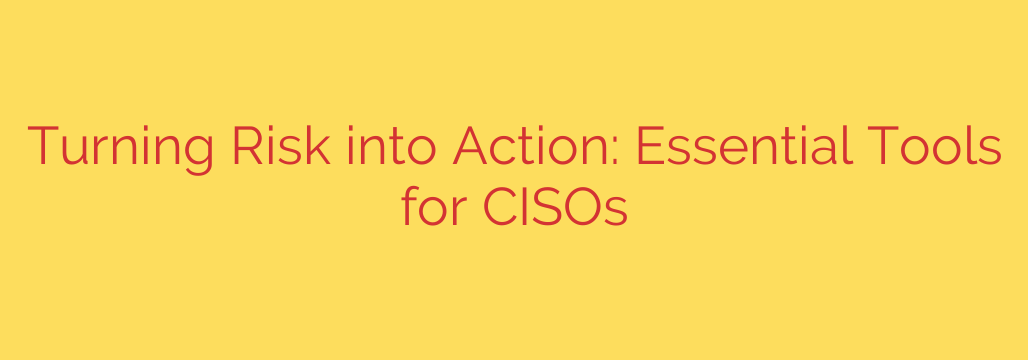
Modern cybersecurity leaders face a constant battle against evolving threats. Simply understanding potential risks isn’t sufficient; the critical challenge lies in converting that knowledge into effective, timely action. Bridging the gap between identifying a vulnerability or threat and implementing a fix is paramount for protecting the organization’s vital assets.
This is where essential security tools come into play. They empower teams to move beyond static reporting and build a dynamic, proactive security posture. The right technology stack enables efficient risk management and accelerates response capabilities, ensuring that identified issues are addressed swiftly and effectively.
Effective integrated risk management platforms serve as a central hub, consolidating data from various security controls. These tools provide a unified view of the cybersecurity risk landscape, helping prioritize efforts based on potential business impact and strategic alignment. They are fundamental for any organization serious about understanding its exposure across the board.
Furthermore, threat intelligence is vital. Tools dedicated to gathering and analyzing external threat data provide crucial context, allowing security teams to anticipate attacks, understand adversary tactics, techniques, and procedures (TTPs), and tailor defenses effectively. Knowing what attackers are targeting helps focus limited resources where they matter most.
To combat the volume of alerts and streamline processes, security automation is indispensable. Platforms for orchestration, automation, and response enable faster incident handling, reduce manual effort, and ensure consistent application of security policies. Automating routine tasks frees up skilled analysts to focus on more strategic initiatives and complex investigations.
Vulnerability management tools are also cornerstones of a proactive security program. They continuously scan systems and applications for weaknesses, providing actionable insights into where security needs strengthening. Coupled with advanced prioritization features, these tools help teams address the most critical flaws first, significantly reducing the organization’s overall attack surface before exploitation can occur.
Ultimately, the goal of deploying these essential tools is to transform complex cybersecurity risk data into clear, prioritized tasks that drive mitigation and improvement. They provide the necessary visibility, context, and automation to ensure that identified risks are not just reported, but actively mitigated and managed. Implementing the right set of technologies is key for any CISO looking to build a resilient and effective security program that truly translates risk into action across the enterprise. These tools are not just expenses; they are strategic investments in the organization’s defense and operational continuity.
Source: https://www.helpnetsecurity.com/2025/06/04/ciso-exposure-management/








